前言
关于博客系统,相信大家早已驾轻就熟,网上有很多以markdown驱动的博客框架,如vuepress,hexo等,这类框架的本质是生成静态站点,而个人开发的博客系统大多是使用数据库的全栈项目,这两种方式各有各的好处,这里就不做比较了
这篇文章我们将自己独立去开发并部署一个以markdown驱动的静态站点博客,所用技术栈如下:
React
TypeScript
Next.js
tailwindcss
Vercel部署
注意: 本文只是演示使用Next.js从 0 到 1 构建并部署一个个人博客项目,不会对项目构建过程中所用到的技术做详细的讲解,不过不用担心,只要跟着文章一步一步来,小白都能成功部署自己的个人博客!
项目仓库地址:https://github.com/Chen0807AiLJX/next-blog最终效果可见:https://next-blog-eosin-six.vercel.app/
现在让我们开始吧!
开始之前请确保自己电脑上配置的有Node.js 12.13.0 或更高版本。
1、创建 Next.js 项目
要创建 Next.js 应用程序,请打开终端,cd进入到要在其中创建应用程序的目录,然后运行以下命令:
npx create-next-app@latest --typescript ailjx-blog
复制代码
上述代码表示:通过create-next-app创建名为ailjx-blog的TypeScript版本的Next.js应用程序
用vscode打开ailjx-blog项目,目录结构如下:
在项目根目录终端运行以下命令启动项目:
打开http://localhost:3000/显示如下页面:
2、安装 tailwindcss
在项目根目录终端运行以下命令:
npm install -D tailwindcss@latest postcss@latest autoprefixer@latest
复制代码
生成tailwindcss配置文件:
此时项目里会多出两个文件:tailwind.config.js和postcss.config.js
修改tailwind.config.js文件里的content为:
content: [ "./pages/**/*.{js,ts,jsx,tsx}", "./components/**/*.{js,ts,jsx,tsx}", "./styles/**/*.css", ],
复制代码
在pages文件夹下的_app.tsx文件的第一行添加:
import "tailwindcss/tailwind.css";
复制代码
之后重新启动项目
3、添加布局页面
准备一张自己的头像(建议比例为 1:1,这里演示用的头像文件名为author.jpg)
在public文件夹下新建images文件夹,将你的头像图片放入其中,并删除public文件夹下的svg文件
public文件为项目的静态文件,可直接通过地址访问,如访问演示所用头像:http://localhost:3000/images/author.jpg
项目根目录下新建components文件夹,并添加布局文件layout.tsx:
import Head from "next/head";import Image from "next/image";import Link from "next/link";
const name = "Ailjx"; // 名称,根据需要修改export const siteTitle = "Ailjx Blog"; // 网站标题,根据需要修改
interface Props { children: React.ReactNode; home?: boolean;}
export default function Layout({ children, home }: Props) { return ( <div className='max-w-2xl mx-auto px-4 mt-12 mb-24'> <Head> <link rel='icon' href='/favicon.ico' /> <meta name='description' content='AiljxBlog——Ailjx的博客' /> <meta property='og:image' content={`https://og-image.vercel.app/${encodeURI( siteTitle )}.png?theme=light&md=0&fontSize=75px&images=https%3A%2F%2Fassets.vercel.com%2Fimage%2Fupload%2Ffront%2Fassets%2Fdesign%2Fnextjs-black-logo.svg`} /> <meta name='og:title' content={siteTitle} /> <meta name='twitter:card' content='summary_large_image' /> </Head> <header className='flex flex-col items-center'> {home ? ( <> <Image priority src='/images/author.jpg' className='rounded-full' height={144} width={144} alt={name} /> <h1 className='text-5xl font-extrabold tracking-tighter my-4'> {name} </h1> </> ) : ( <> <Link href='/'> <a> <Image priority src='/images/author.jpg' className='rounded-full' height={108} width={108} alt={name} /> </a> </Link> <h2 className='text-2xl my-4'> <Link href='/'> <a>{name}</a> </Link> </h2> </> )} </header> <main>{children}</main> {!home && ( <div className='mt-12'> <Link href='/'> <a>← 返回首页</a> </Link> </div> )} </div> );}
复制代码
这里使用了几个Next自带的组件:
4、新建 markdown 文章
项目根目录下新建posts文件夹,添加一个markdown文件,如:
欢迎来到我的博客.md
---title: "欢迎来到我的博客"date: "2022-08-08"---
## 欢迎你!
复制代码
注意: 需要在每个markdown文件的顶部通过---添加元数据,元数据需要有title字段表示文章标题,date字段表示日期,如上面欢迎来到我的博客.md的元数据为:
---title: "欢迎来到我的博客"date: "2022-08-08"---
复制代码
这些数据在我们渲染markdown内容时需要用到
5、解析 markdown 内容
需要安装以下插件:
在项目根目录终端运行以下命令安装上述插件:
npm i remark-prism date-fns gray-matter next-mdx-remote remark-external-links
复制代码
npm i @types/remark-prism --D
复制代码
在项目根目录新建存放工具函数的utils文件夹,里面新建处理markdown文件的posts.ts:
import fs from "fs";import path from "path";// gray-matter:获取元数据import matter from "gray-matter";// date-fns:处理日期import { parseISO } from "date-fns";import { serialize } from "next-mdx-remote/serialize";// remark-prism:markdown代码高亮import prism from "remark-prism";// externalLinks:使markdown的链接是在新页面打开链接import externalLinks from "remark-external-links";
interface MatterMark { data: { date: string; title: string }; content: string; [key: string]: unknown;}
// posts目录的路径const postsDirectory = path.join(process.cwd(), "posts");// 获取posts目录下的所有文件名(带后缀)const fileNames = fs.readdirSync(postsDirectory);
// 获取所有文章用于展示首页列表的数据export function getSortedPostsData() { // 获取所有md文件用于展示首页列表的数据,包含id,元数据(标题,时间) const allPostsData = fileNames.map((fileName) => { // 去除文件名的md后缀,使其作为文章id使用 const id = fileName.replace(/\.md$/, "");
// 获取md文件路径 const fullPath = path.join(postsDirectory, fileName);
// 读取md文件内容 const fileContents = fs.readFileSync(fullPath, "utf8");
// 使用matter提取md文件元数据:{data:{//元数据},content:'内容'} const matterResult = matter(fileContents);
return { id, ...(matterResult.data as MatterMark["data"]), }; });
// 按照日期从进到远排序 return allPostsData.sort(({ date: a }, { date: b }) => // parseISO:字符串转日期 parseISO(a) < parseISO(b) ? 1 : -1 );}
// 获取格式化后的所有文章id(文件名)export function getAllPostIds() { // 这是返回的格式: // [ // { // params: { // id: '......' // } // }, // { // params: { // id: '......' // } // } // ]
return fileNames.map((fileName) => { return { params: { id: fileName.replace(/\.md$/, ""), }, }; });}
// 获取指定文章内容export async function getPostData(id: string) { // 文章路径 const fullPath = path.join(postsDirectory, `${id}.md`);
// 读取文章内容 const fileContents = fs.readFileSync(fullPath, "utf8");
// 使用matter解析markdown元数据和内容 const matterResult = matter(fileContents);
return { content: await serialize(matterResult.content, { mdxOptions: { remarkPlugins: [prism, externalLinks] }, }), ...(matterResult.data as MatterMark["data"]), };}
复制代码
posts.ts里有三个主要的函数:
getSortedPostsData:在首页用于展示文章列表
getAllPostIds:获取指定格式的所有文章id(文件名),这个格式是Next所要求的
因为我们在写文章详情页面时需要使用动态路由,每个文章的id就是一个路由,并且我们使用的Next静态站点生成会在项目打包构建时直接生成所有的html文件,需要把每一个路由对应的页面都构建出来,Next会根据getAllPostIds函数返回的这种格式的数据去构建每一个html页面
getPostData:获取文章详情,在文章详情页面会用到
6、添加首页
首页会展示文章列表,会用到一个日期渲染组件,我们先创建一下
在components文件夹下新建date.tsx文件:
import { parseISO, format } from "date-fns";
interface Props { dateString: string;}
export default function Date({ dateString }: Props) { const date = parseISO(dateString); return ( <time dateTime={dateString} className='text-gray-500'> {format(date, "yyyy年MM月dd日")} </time> );}
复制代码
修改pages文件夹下的index.tsx文件如下:
import type { NextPage, GetStaticProps } from "next";import Head from "next/head";import Layout, { siteTitle } from "../components/layout";import Link from "next/link";import Date from "../components/date";
import { getSortedPostsData } from "../utils/posts";
interface Props { allPostsData: { date: string; title: string; id: string; }[];}
const Home: NextPage<Props> = ({ allPostsData }) => { return ( <Layout home> <div> <Head> <title>{siteTitle}</title> </Head>
<section className='text-xl leading-normal text-center'> <p>你好,我是 Ailjx</p> <p>一个又菜又爱玩的前端小白,欢迎来到我的博客!</p> </section>
<section className='text-xl leading-normal pt-4'> <h2 className=' text-2xl my-4 font-bold'>Blog</h2> <ul> {allPostsData.map(({ id, date, title }) => ( <li key={id} className='mb-5'> <Link href={`/posts/${id}`}> <a>{title}</a> </Link> <br /> <small> <Date dateString={date} /> </small> </li> ))} </ul> </section> </div> </Layout> );};
export const getStaticProps: GetStaticProps = async () => { // 获取文章列表 const allPostsData = getSortedPostsData();
return { props: { allPostsData, }, };};
export default Home;
复制代码
修改styles文件夹下的globals.css如下:
a { color: #0070f3; text-decoration: none;}
a:hover { text-decoration: underline;}
img { max-width: 100%; display: block;}::-webkit-scrollbar { width: 5px; height: 5px; position: absolute;}::-webkit-scrollbar-thumb { background-color: #0070f3;}::-webkit-scrollbar-track { background-color: #ddd;}
复制代码
删除style文件夹下的Home.module.css
此时运行项目,打开http://localhost:3000/可见:
7、添加文章详情页面
在pages文件夹下创建posts文件夹,在其中创建[id].tsx文件:
import type { GetStaticProps, GetStaticPaths } from "next";import Layout from "../../components/layout";import { getAllPostIds, getPostData } from "../../utils/posts";import Head from "next/head";import Date from "../../components/date";import { MDXRemote, MDXRemoteProps } from "next-mdx-remote";// 引入代码高亮cssimport "prismjs/themes/prism-okaidia.min.css";
interface Props { postData: { title: string; date: string; content: MDXRemoteProps; };}
export default function Post({ postData }: Props) { return ( <Layout> <Head> <title>{postData.title}</title> </Head> <h1 className='text-3xl font-extrabold my-4 tracking-tighter'> {postData.title} </h1>
<Date dateString={postData.date} />
<article className='py-8 prose prose-h1:mt-8'> <MDXRemote {...postData.content} /> </article> </Layout> );}
// getStaticProps和getStaticPaths只在服务器端运行,永远不会在客户端运行export const getStaticPaths: GetStaticPaths = async () => { // 获取所有文章id,即所有路由 const paths = getAllPostIds(); return { paths, fallback: false, };};
export const getStaticProps: GetStaticProps = async ({ params }) => { // 获取文章内容 const postData = await getPostData(params!.id as string); return { props: { postData, }, };};
复制代码
之后在首页点击文章列表跳转到文章详情页面:
到此一个简单的博客项目就写好了
8、Vercel 部署
没有Github账号的先去注册一个账号
在Github上新建一个名为next-blog的仓库(名称自己根据需要修改):
仓库权限公共私有都可,并且不需要使用README 或其他文件对其进行初始化
在我们的博客项目根目录下运行以下命令推送代码到Github仓库里:
git remote add origin https://github.com/<username>/next-blog.gitgit branch -M maingit push -u origin main
复制代码
请将上述第一行命令origin后面的地址替换成你的仓库地址,一般是将<username>替换为你Gitub的用户名,next-blog替换成你仓库的名称
之后刷新仓库查看代码:
项目仓库地址:https://github.com/Chen0807AiLJX/next-blog
细心的大佬应该会发现我们这样提交代码是有问题的,因为我们并没有合并本地代码到本地仓库,所以提交到Github仓库的代码并不是我们最终的效果,而是创建Next.js时的初始效果。
不过不用担心,我们在后面会对其进行处理。当然,你也可以现在处理,直接将最新的代码同步到仓库,这样你就免了后面我们对其处理的操作
打开Vercel,没有Vercel账号的点击右上角的注册按钮进行注册,注册时选择通过Github注册,登录时也使用Github登录
登录Vecel成功后打开 https://vercel.com/import/git或https://vercel.com/new或点击新建项目按钮,之后进入到以下页面:
这个页面中会自动获取你的Github仓库,选择你刚刚推送博客项目的仓库,点击Import按钮,之后直接点击Deploy按钮:
稍等片刻,出现以下页面就部署成功了:
点击上述页面左侧的页面预览框就能跳转到你部署成功的网页了,但这时你会发现部署的页面不是我们最终的页面,而是创建Next.js时的初始页面,这是因为我们在Git提交代码到仓库时没有合并本地代码,我们重新提交一下就行了
我们可以在VScode里快速提交代码到仓库:
点击同步更改后会开始转圈,等待转圈结束就提交成功了,之后什么都不用干,仓库代码更新后Vercel会自动部署!!!
打开https://vercel.com/dashboard能查看到你已经部署的项目和对应的网页地址:
好啦,到此我们的任务就全部完成了,之后需要添加文章只需要在项目的posts文件内新建markdown文件就行了(不要忘记在markdown顶部添加元数据),更新完文章提交代码到仓库即可
结语
这次使用Next.js搭建个人博客只是一个小小的尝试,可以说是只搭建了一个骨架,其实走完整个流程你应该会有很多有趣的想法去完善填充你的博客,因为基础功能我们已经实现,剩下的就是锦上添花的操作了,这完全取决于你
项目仓库地址:https://github.com/Chen0807AiLJX/next-blog最终效果可见:https://next-blog-eosin-six.vercel.app/
参考资料:
如果本篇文章对你有所帮助,还请客官一件四连!❤️

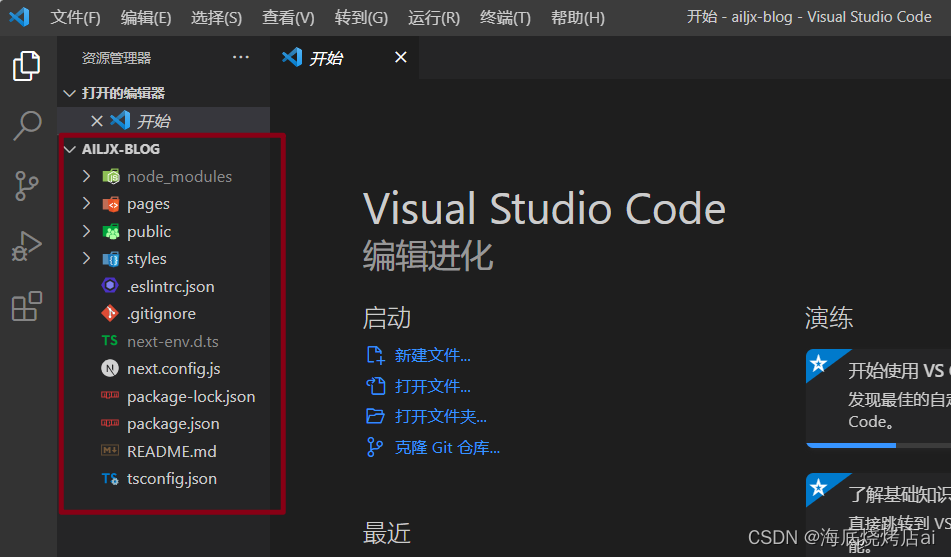
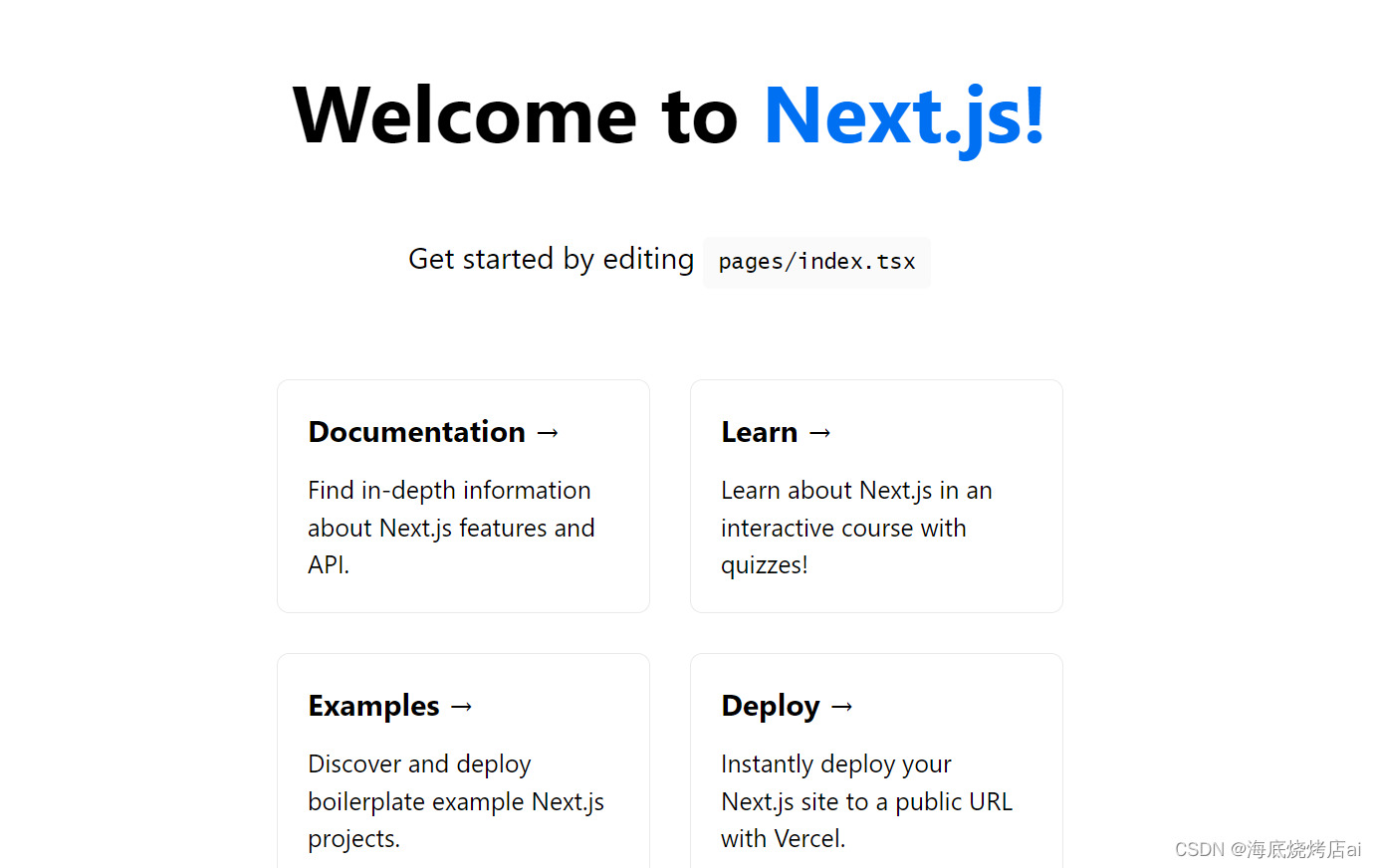


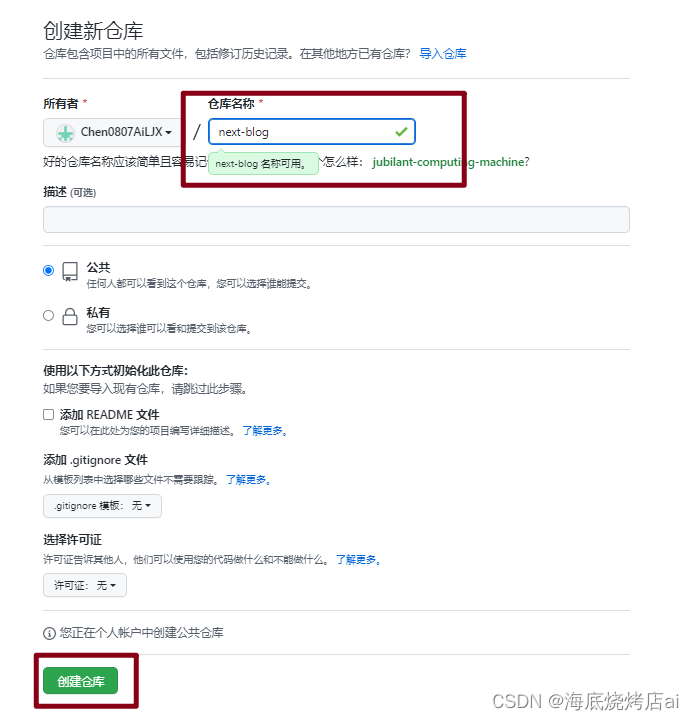
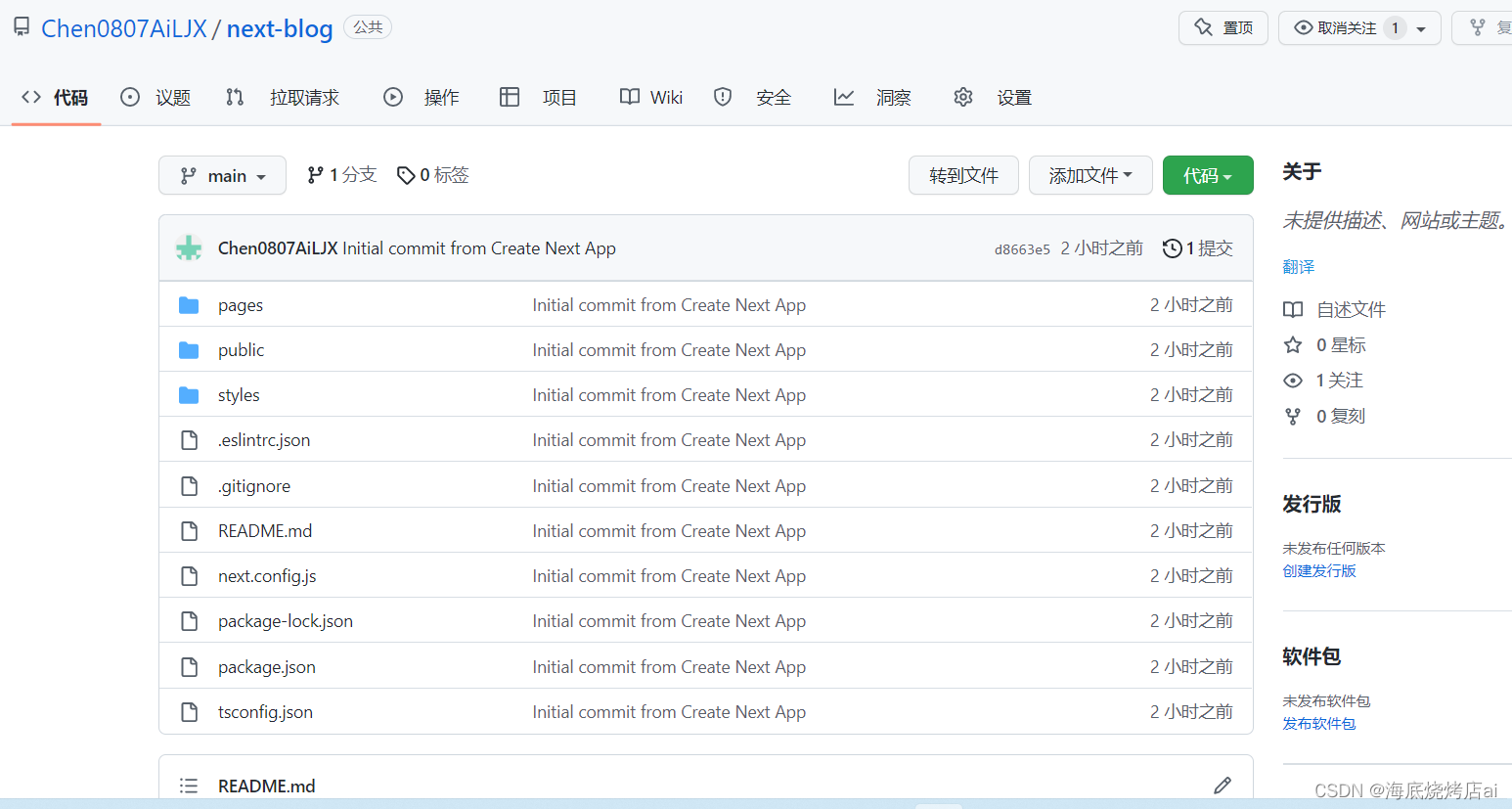
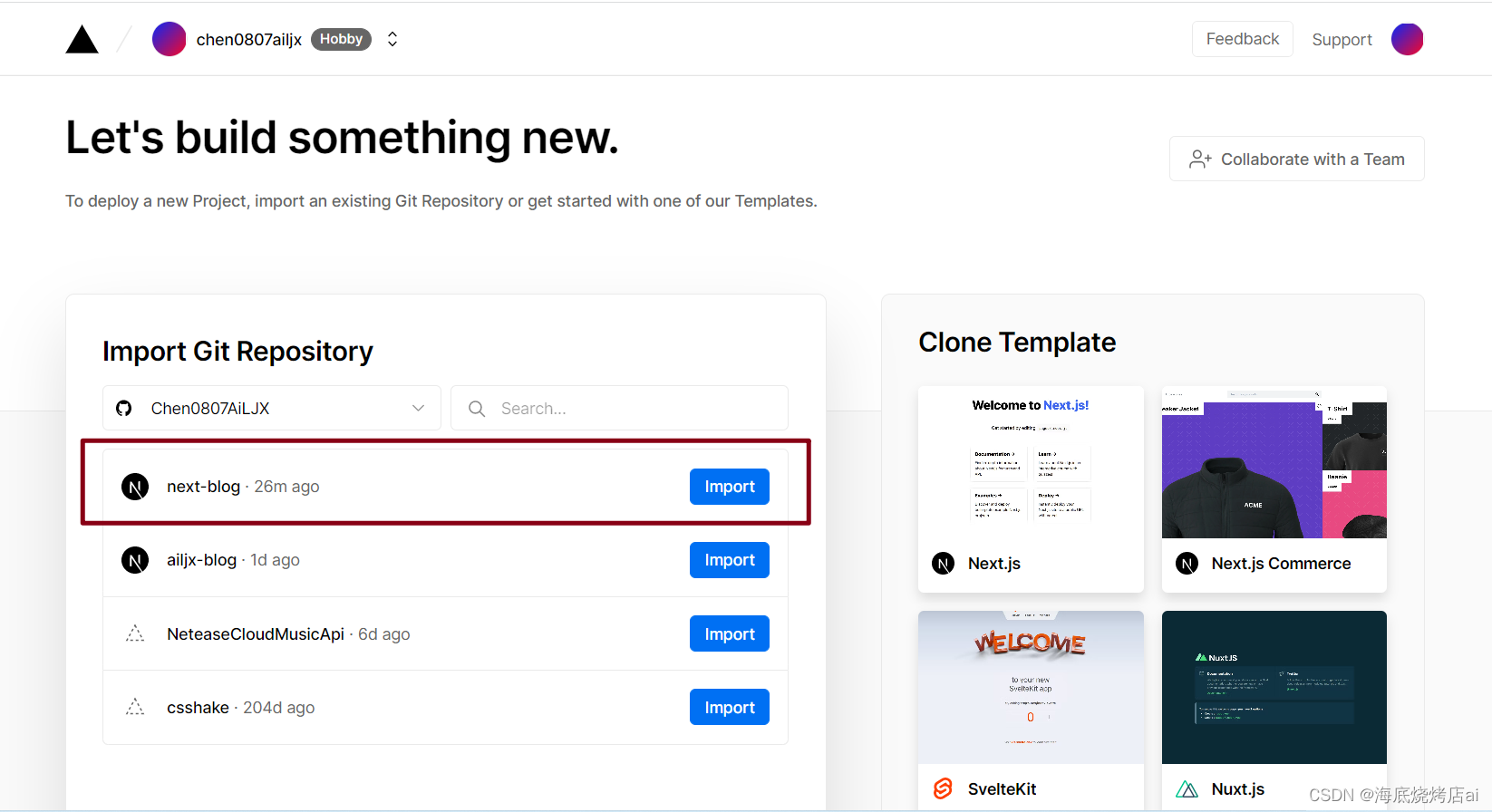
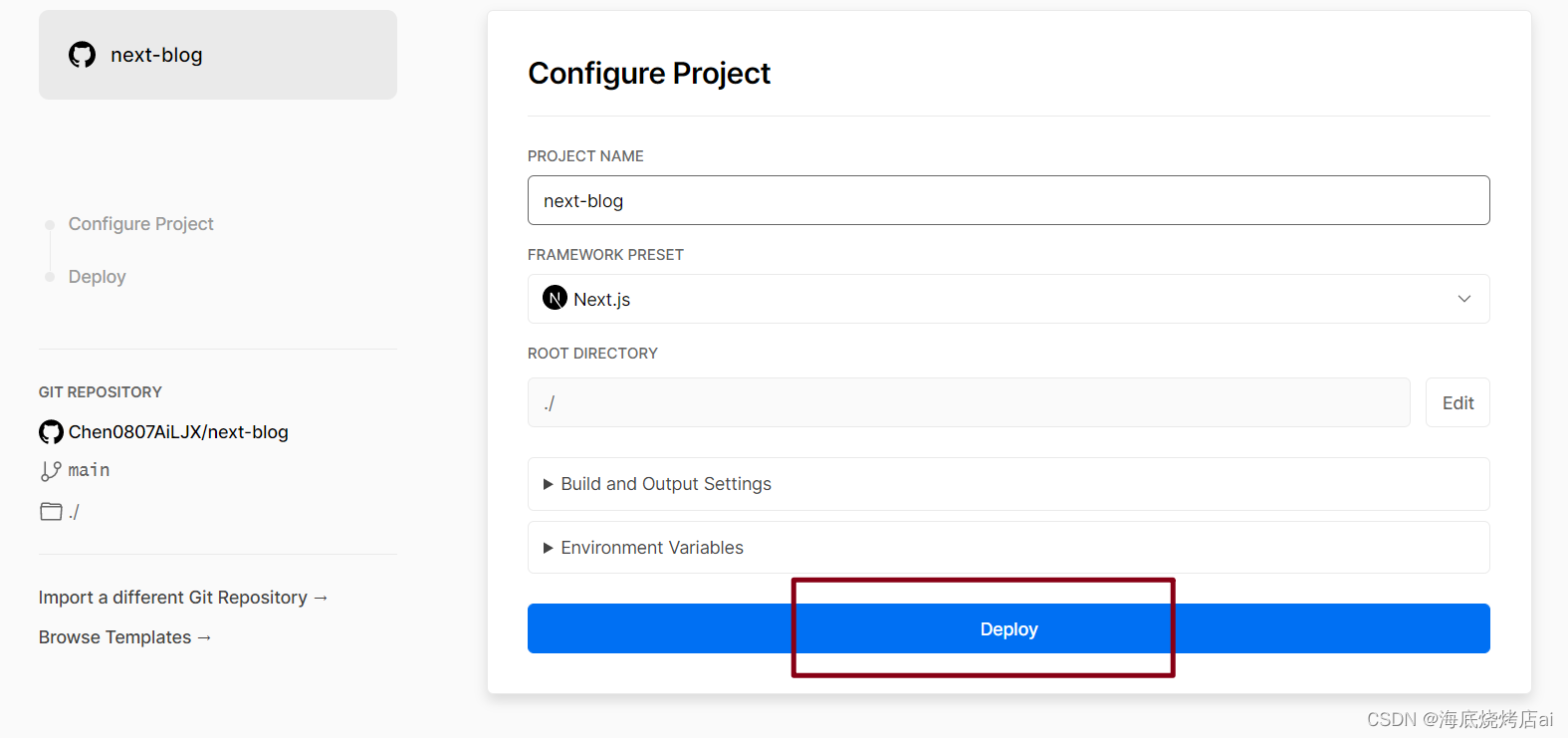
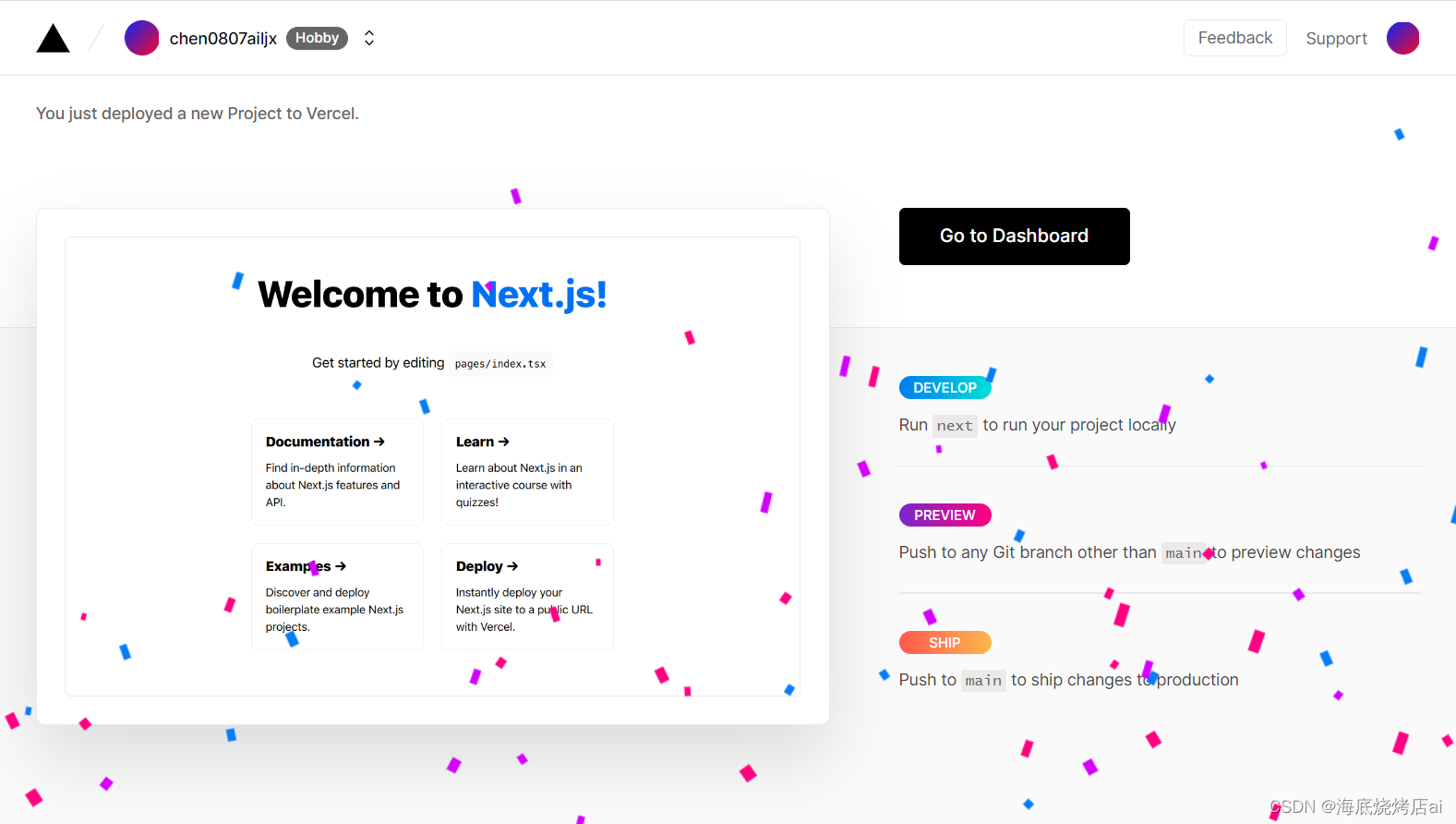
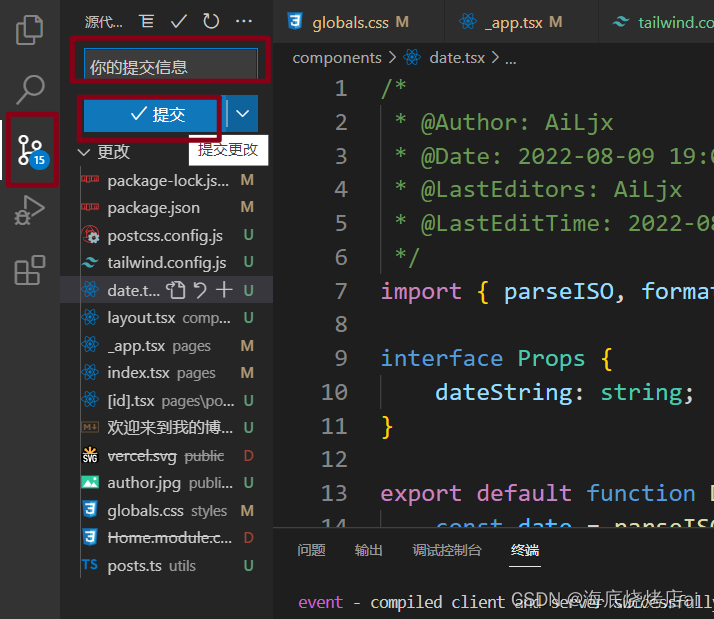
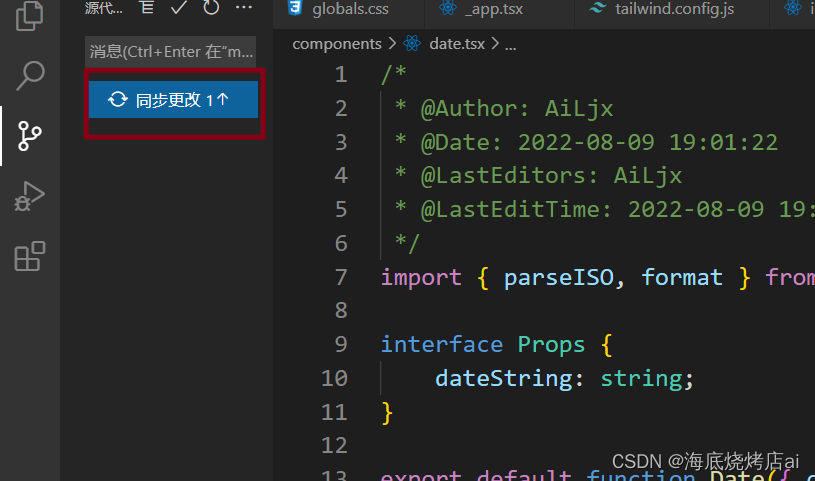
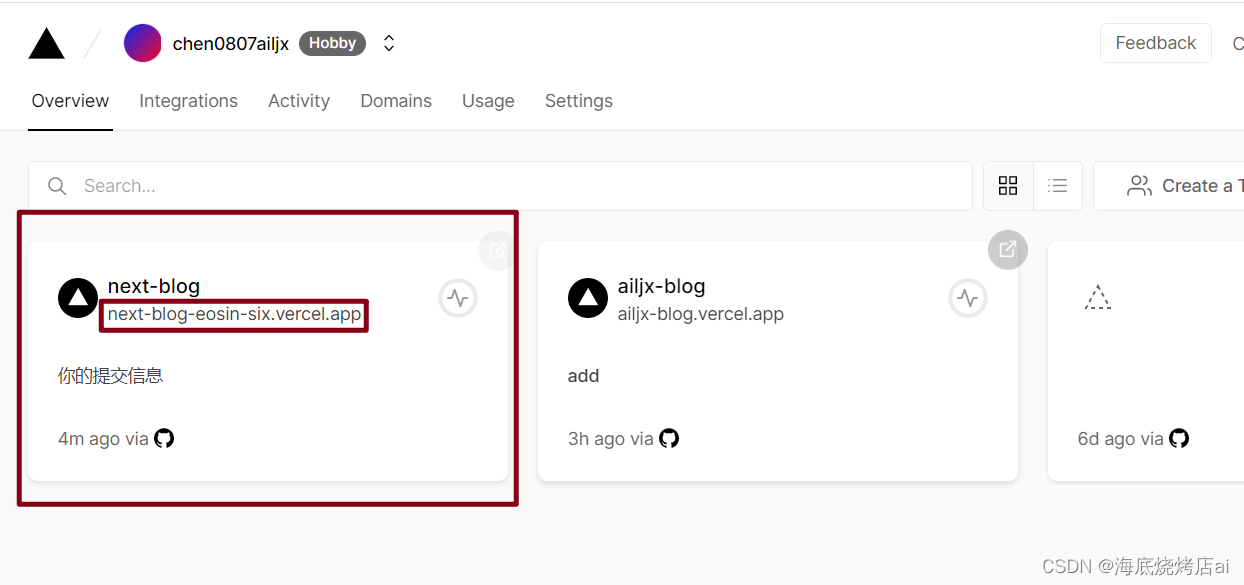










评论